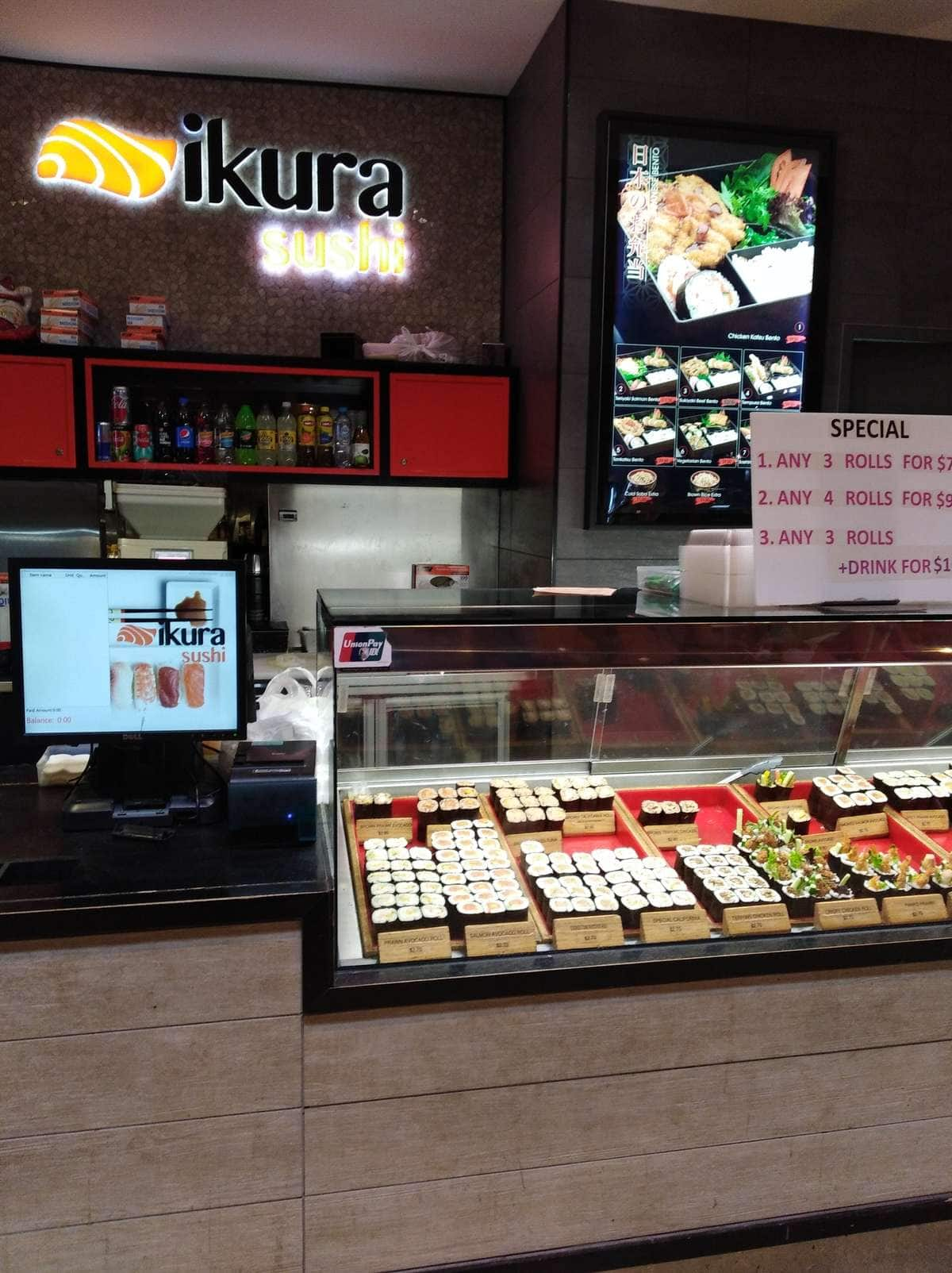Ikura De Yaremasu: Making Gourmet Salmon Roe At Home Is Easier Than You Think
Have you ever dreamed of enjoying the exquisite taste of ikura, that vibrant, popping salmon roe, right in your own kitchen? For many, the idea of preparing such a gourmet item at home might seem a bit out of reach, perhaps even a little intimidating. Yet, what if we told you that achieving this culinary delight is far simpler than you might imagine? It's almost like a secret many home cooks are only just discovering, and it truly changes how you think about fancy ingredients.
Ikura, with its juicy texture that bursts with every bite and a rich flavor that melts delightfully, is indeed a very popular sushi item. It brings a unique, savory experience to any meal, whether it's on a delicate piece of nigiri or sprinkled over a bowl of rice. This special food item, you know, really adds a touch of elegance, making everyday dining feel a bit more special, a bit more celebratory.
The phrase "ikura de yaremasu" essentially means "you can do it with ikura," or more broadly, "it's possible with ikura." This phrase, as a matter of fact, perfectly captures the spirit of what we are going to explore today: the surprising ease of making your own cured salmon roe right at home. You can actually achieve that restaurant-quality taste and texture without needing any special equipment or advanced culinary skills. It's truly a rewarding process, and you might be surprised by how straightforward it is.
- Define Lavender Marriage
- African Male Dog Names
- Denver Nuggets Vs Houston Rockets Match Player Stats
- Tattoo David
- Message For A Friend That Passed Away
Table of Contents
- What Exactly is Ikura?
- Why "Ikura de Yaremasu"? The Ease of Home Preparation
- Getting Started: Your Ikura Adventure
- The Super Easy Process of Curing Salmon Roe
- Choosing Your Roe: The First Step
- Pantry Staples You Already Have
- More About Ikura: Its Origins and Unique Qualities
- Nutritional Value of Ikura
- How to Enjoy Your Homemade Ikura
- Frequently Asked Questions About Ikura
What Exactly is Ikura?
Ikura is, in essence, cured salmon roe. It's a truly distinctive food item, known for its vibrant orange hue and a texture that is, well, almost creamy, yet it pops wonderfully when you bite into it. Unlike some other fish roes, like tobiko (which comes from flying fish) or masago (from capelin), ikura is significantly larger. This size difference, you know, makes it stand out on a plate and provides a much more substantial burst of flavor.
The term "ikura" itself has a rather interesting background. It actually originates from "ikra," a Russian word that simply means fish eggs or caviar in general. So, in a way, the Japanese adopted this term, but they narrowed its meaning. Today, in Japan, "ikura" is used strictly to refer to the eggs of salmon fish. It's a pretty specific distinction, and it helps avoid any confusion with other types of roe you might encounter.
Before it becomes the glistening ikura we all recognize, it starts as fresh salmon roe still in its skein, which is the membrane holding the eggs together. This raw form, you know, looks a bit different, but it holds all the potential for that amazing cured product. The transformation from raw roe to finished ikura is a process of gentle curing, often in a salt brine, sometimes with a touch of soy sauce added for extra depth of flavor. This curing process is what gives ikura its characteristic taste and texture, and it's something you can absolutely do at home, as a matter of fact.
- Lesbian Kpop Idols
- Watch Lion Movie 2016
- Memes Of Friends
- Sympathy Quotes Loss Of A Mother
- Rose Tattoo Meaning For Men
Why "Ikura de Yaremasu"? The Ease of Home Preparation
The core message behind "ikura de yaremasu" is that this seemingly complex gourmet food is actually quite approachable for the home cook. Many people, you know, might think of curing fish roe as something only professional chefs attempt, something requiring specialized knowledge or equipment. But that's just not the case here. It's a surprisingly straightforward process that truly anyone can pick up with a little guidance.
The beauty of making ikura at home lies in its simplicity. You don't need fancy tools or obscure ingredients. In fact, the main component is uncured salmon roe, which you can often find at fish markets or specialty grocery stores. And for the curing part, well, you only need a few pantry staples, things you likely already have on hand. This ease, you know, is what makes it so appealing to try. It's a project that delivers big results without a lot of fuss.
Think about it: that juicy texture, that rich flavor that melts in your mouth – all of that can be yours, made by your own hands. The satisfaction of serving homemade ikura, perhaps as a garnish or as part of your own sushi creations, is pretty immense. It's a way to bring a touch of restaurant-level dining to your table, and it really feels like a special accomplishment. So, yes, when it comes to ikura, you absolutely can do it. It's not nearly as hard as it looks.
Getting Started: Your Ikura Adventure
Embarking on your own ikura-making journey begins with sourcing the right ingredients. The most important part, of course, is the salmon roe itself. You want to look for fresh salmon roe that is still in its skein. This means the eggs are still held together by their natural membrane. This fresh, uncured state is what you need to start with, and it makes the process much simpler, too it's almost a requirement.
When you're at the fish counter, ask specifically for "salmon roe in the skein." The quality of your final ikura will largely depend on the freshness of the roe you start with. So, you know, look for roe that appears plump, glistening, and has a bright, uniform color. Avoid anything that looks dull, shriveled, or has a strong, fishy smell, as that's a pretty clear sign it's not as fresh as it could be.
Once you have your fresh roe, the rest of the ingredients are truly minimal. We're talking about things like salt and, for some variations, soy sauce. That's pretty much it! This simplicity, in a way, makes the whole endeavor less intimidating and more accessible for anyone wanting to give it a go. It's not like you need a whole list of obscure items, which is quite nice.
The Super Easy Process of Curing Salmon Roe
Making ikura, or curing salmon roe, sounds like a very complex kitchen task, but it is actually super easy. The main goal is to separate the tiny eggs from their surrounding membrane and then let them soak in a simple brine. This process, you know, transforms them from raw roe into those delightful, popping pearls we love. It's a bit of a hands-on activity, but it's very rewarding.
First, you need to gently separate the roe from the skein. There are a few ways to do this, but a common method involves carefully rubbing the skein over a coarse mesh or a fine-holed colander under cool running water. This helps the individual eggs detach without breaking them. You want to be quite gentle during this step, as preserving the integrity of each egg is pretty important for the final texture. It takes a little patience, but it's not difficult, really.
Once the eggs are separated, they go into a salt brine. The exact ratio of salt to water, and whether you add soy sauce or other seasonings, can vary based on personal preference and tradition. Some chefs, for instance, might add a touch of mirin or sake to their brine for a slightly different flavor profile. The roe typically soaks for anywhere from a few hours to several days, depending on how firm you want the eggs to be and how salty you like them. This soaking time is where the magic happens, allowing the flavors to meld and the texture to firm up. It's a pretty flexible part of the process, allowing for some experimentation.
Choosing Your Roe: The First Step
As we touched on, the starting point for amazing homemade ikura is always fresh salmon roe in the skein. This isn't just a suggestion; it's genuinely the most crucial element for a successful outcome. The quality of the raw material, you know, directly impacts the taste, texture, and overall appeal of your finished product. So, paying attention here is quite important.
When you're at the fish market, look for roe that appears plump and bright. The eggs should be clear and distinct, not cloudy or clumped together. A good sign of freshness is also a very mild, clean ocean scent, rather than a strong, fishy odor. If you can, try to purchase it from a reputable fishmonger who gets fresh deliveries regularly. This ensures you're starting with the best possible base for your ikura.
Sometimes, you might find pre-separated salmon roe, but for curing at home, the roe in the skein is generally preferred. The membrane helps protect the delicate eggs until you're ready to process them, reducing the chance of breakage. It's a bit like buying fruit with its skin on; it stays fresher longer. So, yes, always aim for that fresh, intact skein for the best results, you know.
Pantry Staples You Already Have
One of the truly appealing aspects of making ikura at home is how few specialized ingredients you need beyond the salmon roe itself. All you really need are a few pantry staples, items that are likely already sitting in your kitchen cupboard. This accessibility, you know, removes a big barrier for many people who might otherwise shy away from making gourmet items at home.
The primary staple is salt. Salt is essential for the curing process, helping to preserve the roe and enhance its flavor. You'll typically use a non-iodized salt, like sea salt or kosher salt, for the brine. The type of salt can actually influence the final taste slightly, so some people might prefer one over another. It's a pretty simple ingredient, but it plays a very big role, as a matter of fact.
Beyond salt, many ikura recipes incorporate soy sauce. Soy sauce adds a wonderful umami depth and a beautiful color to the cured roe. Some variations might also include a touch of mirin (sweet rice wine) or sake to round out the flavors. These additions are usually just a little bit, but they can make a difference in the final product. So, you know, with just these basic items, you're well on your way to creating your own delicious ikura.
More About Ikura: Its Origins and Unique Qualities
The journey of ikura into Japanese cuisine is quite fascinating, and it's a story that actually involves some interesting historical twists. As we've mentioned, the term "ikura" itself comes from the Russian word "ikra," which broadly refers to fish eggs or caviar. This suggests a direct influence from Russian culinary traditions. It's pretty cool how words and foods travel across cultures, isn't it?
Interestingly, the Japanese did not traditionally eat salmon until a wildly successful Norwegian marketing campaign introduced it to their diet. Before this, salmon was not a common part of Japanese cuisine, particularly for raw consumption. So, the idea of eating salmon roe, or ikura, as a gourmet item in sushi is a relatively new ingredient in the grand scheme of Japanese culinary history. This is, you know, a pretty surprising fact for many.
What sets ikura apart from other fish roes, like tobiko or masago, is its size and distinctive texture. Ikura is significantly larger, boasting that vibrant orange hue, and it has a unique, almost creamy, texture that gives way to a satisfying pop when bitten. This combination of visual appeal, size, and mouthfeel makes it a very sought-after ingredient. The difference, as a matter of fact, is quite noticeable, and it contributes to ikura's special place in the culinary world.
Nutritional Value of Ikura
Beyond its incredible taste and texture, ikura also offers some notable nutritional benefits. It's a food item that packs a good punch in terms of healthy fats and certain vitamins, making it a valuable addition to your diet. Understanding what you're eating, you know, can make enjoying it even more satisfying. It's not just delicious; it's pretty good for you too.
Ikura is a very good source of omega-3 fatty acids, which are widely recognized for their heart-healthy properties. These essential fats, you know, play a role in supporting brain function and reducing inflammation. Given that our bodies can't produce omega-3s on their own, getting them from food sources like ikura is quite beneficial. It's a tasty way to boost your intake, actually.
Additionally, ikura contains a variety of vitamins and minerals. It's a source of Vitamin D, which is important for bone health and immune function, and Vitamin B12, which is vital for nerve function and red blood cell production. You'll also find minerals like selenium in ikura. So, in some respects, it's a pretty nutrient-dense food, offering more than just a delightful flavor. It's a small package, but it's full of good stuff.
How to Enjoy Your Homemade Ikura
Once you've successfully made your own ikura, the possibilities for enjoying it are truly endless. This gourmet food item is incredibly versatile, and it can elevate a wide range of dishes, from simple rice bowls to elaborate sushi platters. The beauty of having it homemade, you know, is that you can use it generously and experiment with different pairings. It's a pretty exciting ingredient to have on hand.
One of the most popular ways to enjoy ikura is, of course, in sushi. Whether it's as a topping for nigiri, nestled in a gunkan maki (battleship roll), or simply served over a bowl of seasoned rice (ikura don), its popping texture and rich flavor are simply delightful. It pairs wonderfully with the subtle taste of rice, allowing its unique characteristics to shine through. This is, you know, a classic way to savor it.
But don't stop at sushi! Ikura also works beautifully as a garnish for various dishes. Think about sprinkling it over scrambled eggs for a luxurious breakfast, adding it to pasta dishes for an unexpected burst of flavor, or even topping a simple cream cheese and cracker appetizer. It can also be a fantastic addition to the communal joy of hot pot dining, where you cook fresh ingredients in savory broth for a fun, interactive meal. Just a little bit can make a big impact, and it's pretty versatile, really. You can learn more about Japanese cuisine on our site, and perhaps find more ways to incorporate your homemade ikura. You might also like to check out this page for other delicious recipes.
Frequently Asked Questions About Ikura
Is ikura raw?
Yes, ikura is essentially raw salmon roe that has been cured, typically in a salt brine. The curing process doesn't cook the roe in the traditional sense, but it does alter its texture and flavor, making it safe and delicious to eat. It's a lot like how pickles are cured vegetables; they're not cooked, but they're transformed. So, yes, it's not cooked, but it's certainly ready to eat.
How long does ikura last in the fridge?
Homemade ikura, when stored properly in an airtight container in the refrigerator, can typically last for about 3 to 5 days. For longer storage, you can actually freeze ikura, where it can keep for several months. Just make sure to thaw it slowly in the fridge before enjoying it. It's pretty good for making ahead, you know, if you plan to use it over time.
What is the difference between ikura and tobiko?
The main difference between ikura and tobiko (flying fish roe) is their size and texture. Ikura is significantly larger, boasting a vibrant orange hue and a distinctive, almost creamy, texture that pops. Tobiko, on the other hand, is much smaller, with a finer texture, and often comes in various colors (like red, black, or green) from added dyes. They both pop, but ikura's pop is more substantial, you know, and its flavor is richer. They're both fish eggs, but they're pretty different experiences.
Making your own ikura is a truly rewarding experience, allowing you to create a gourmet item with relative ease. From understanding its origins to mastering the simple curing process, you'll find that "ikura de yaremasu" is not just a phrase, but a delicious reality. Why not give it a try? The satisfaction of enjoying your very own, freshly made ikura is something quite special. For more culinary adventures and tips, you can explore resources like The Spruce Eats, which often provides helpful food information.
- What Happened To Meg From Next Level Chef
- Bryant And Stratton Milwaukee
- Disadvantages Of Crochet Braids
- What Are The Largest Cities In Vermont
- World Record For Longest Run

Ikura de Yaremasu ka? 1262032 Doujin - edoujin

Ikura De Yaremasu Ka – Telegraph

Ikura Yaremasu / Bahasa indonesia selalu update di clickea en el ikura